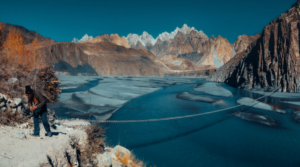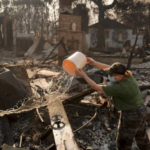Pakistan, a country renowned for its breathtaking glaciers, is facing a growing environmental crisis. Home to over 7,200 glaciers—the largest concentration outside the polar regions—the rapid melting of these ice formations poses significant threats to ecosystems, communities, and water resources. This article explores the impact of climate change on Pakistan’s glaciers and the urgent need for sustainable solutions.
The Importance of Pakistan’s Glaciers
Key Facts
- Glacial Regions: Pakistan’s glaciers span the Karakoram, Hindu Kush, and Himalayas, often referred to as the “Third Pole.”
- Freshwater Resource: Meltwater from these glaciers feeds the Indus River basin, supporting over 300 million people.
- Agriculture: Glaciers sustain the world’s largest irrigated agriculture system, essential for Pakistan and neighboring India.
Glaciers act as natural reservoirs, storing water in winter and releasing it in summer. They are vital for drinking water, irrigation, and hydroelectric power.
The Rapid Melting of Glaciers
Evidence of Decline
- Passu Glacier: Reduced by 10% between 1977 and 2014 and continues shrinking by 4 meters monthly.
- Satellite Images: European Union data from 2016 to 2024 reveals alarming glacial retreat.
Consequences
- Glacial Lake Outburst Floods (GLOFs):
- Over 3,000 glacial lakes identified in Pakistan.
- 33 lakes have a high risk of bursting, threatening 2 million people.
- Water Scarcity:
- Early melting disrupts water availability for agriculture.
- Communities face challenges in irrigating crops during summers.
Climate Change and Natural Disasters
Extreme Weather Events
Pakistan is among the most climate-vulnerable nations despite contributing less than 1% to global carbon emissions.
- Monsoon Floods (2022): Submerged one-third of the country, killing over 1,700 people.
- Heat Waves: Temperatures reached 52°C (125.6°F) in Sindh.
- Smog: Punjab experienced severe air quality degradation during winter months.
Impact on Communities
Mountain communities, particularly in the Hunza Valley, are increasingly endangered by flash floods and landslides. The 2010 Attabad landslide, for example, destroyed villages and formed an artificial lake, now a popular tourist destination but a latent hazard.
Unsustainable Tourism and Pollution
The influx of domestic and international tourists to northern Pakistan has brought both economic benefits and environmental challenges.
Environmental Degradation
- Plastic Pollution:
- Poor waste management contaminates rivers and lakes.
- Illegal dumping exacerbates water pollution.
- Unregulated Development:
- Hotels and guesthouses proliferate without proper land-use policies.
- Septic tank overflows threaten aquatic ecosystems.
Expert Opinion
“Tourism beyond the land’s carrying capacity leads to environmental degradation,” says Aisha Khan, a mountain restoration expert.
Innovative Solutions and Local Efforts
Traditional Practices
- Glacier Grafting: Combining “male” and “female” glaciers to nurture new ice formations, an ancient technique in Gilgit-Baltistan.
- Ice Stupas: Artificial glaciers shaped as ice cones store water for early spring use.
International and Government Initiatives
- Green Climate Fund: Pakistan receives adaptation funding to build embankments, flood walls, and diversion channels.
- Community Conservation: Local solutions aim to manage water scarcity sustainably.
The Future of Pakistan’s Glaciers
The End of the “Karakoram Anomaly”
Previously stable glaciers in the Karakoram region are now melting due to global warming. Snow persistence levels in the Hindu Kush and Himalayas are at a record low, further threatening glacier health.
Call to Action
Glaciologist Sher Muhammad emphasizes the need for policymakers to prioritize reducing carbon emissions. Without global action, the irreversible loss of glaciers will have devastating effects on ecosystems and human livelihoods.
Pakistan Future
Pakistan’s glaciers are melting at an alarming rate, jeopardizing water security, agriculture, and communities. Addressing this crisis requires a combination of local practices, sustainable tourism policies, and international cooperation to combat climate change. Protecting these vital ice formations is crucial for Pakistan’s future.
References
- International Centre for Integrated Mountain Development
- European Union Satellite Data (2016-2024)
- Nature Communications (Glacial Lake Flood Study)
- Pakistan Ministry of Climate Change Reports
















